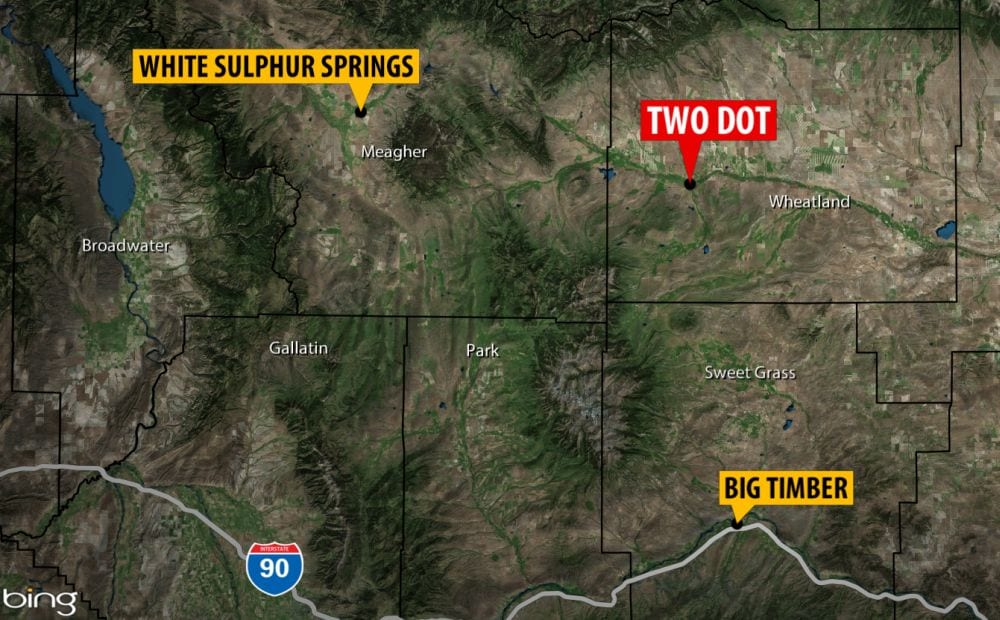
A grizzly bear killed a calf early this week on a ranch north of Two Dot, according to Montana Fish, Wildlife, and Parks. The depredation was investigated by the U.S. Department of Agriculture’s Wildlife Services, the agency responsible for investigating any livestock depredation.
After determining the calf was killed by a grizzly bear, Wildlife Services tried unsuccessfully to capture the bear at the site. Given a high number of black bears in the area as well, traps were pulled on Wednesday.
A grizzly bear was photographed with a trail camera in early September near the Haymaker Wildlife Management Area about 12 miles north of the depredation site. It is unknown whether this is the same bear as the one that killed the calf.
Grizzly bears are expanding their range in Montana and although they aren’t common in the mountains around Two Dot (Little Belts, Crazies, and Snowies), populations are expanding out from the Northern Continental Divide Ecosystem (NCDE) and the Greater Yellowstone Ecosystem (GYE) in all directions.
Dispersing bears can roam many miles. An example last year was two sub-adult males that were captured and euthanized after killing cattle near Stanford (see below).
Wildlife officials do not yet know whether this grizzly bear came from the NCDE or the GYE. Biologists with FWP are investigating and trying to locate either scat or hair samples from the bear for DNA analysis, which will indicate where it came from.
Hunters this time of year, whether pursuing big game or birds, should be prepared to encounter grizzly bears anywhere in the western half of Montana, even if bears aren’t known to be there. Being bear aware while hunting means carrying bear spray and being prepared to use it, hunting with more than one person and always letting someone know where you’re going. Additionally, hunters should be on the look out for bear activity, including overturned rocks and logs, tracks and scat.
Landowners should also remove or secure attractants including garbage, pet food, bird feeders, and clean up around fruit trees to prevent unwanted conflicts with bears and other wildlife such as skunks and raccoons.
Grizzly bears are listed as threatened under the Endangered Species Act. As such, killing or harming grizzly bears is illegal except by agency personnel for certain conflict or human-safety situations. However, individuals may legally take a grizzly bear in an act of self-defense or defense of another human if there is an immediate danger of being attacked.
(JUNE 27, 2017) Two young grizzly bears were captured near Stanford over the weekend after killing several calves. The calves belonged to the Surprise Creek Hutterite Colony several miles west of Stanford.
Mike Madel, bear management specialist with Montana Fish, Wildlife, and Parks, says that this is farthest east that grizzly bears have been sighted in recent history.
Madel believes the bears headed east from Choteau and may have been the two bears recently seen near Carter, Floweree, and Raynesford.
Madel noted that the bears were likely drawn to the colony due to some attractants.
The two bears, believed to be about 2 1/2 years old and weighing about 290 pounds each, have been euthanized.


